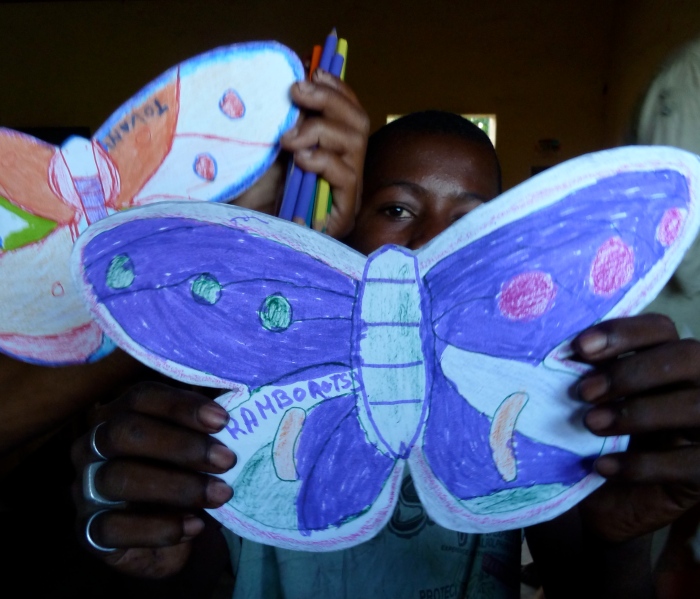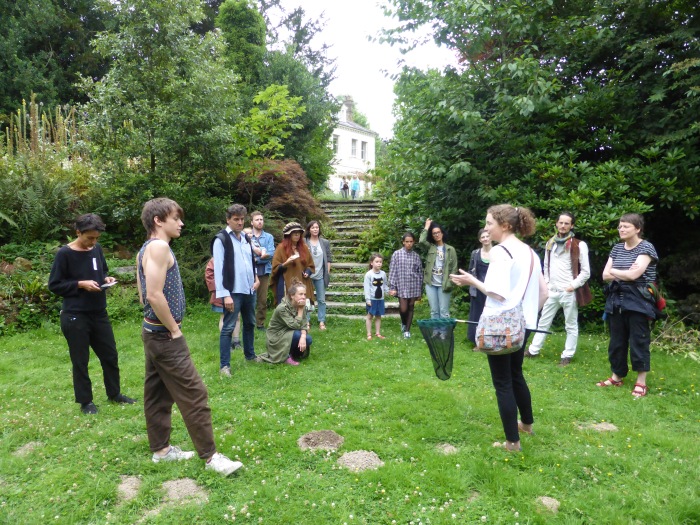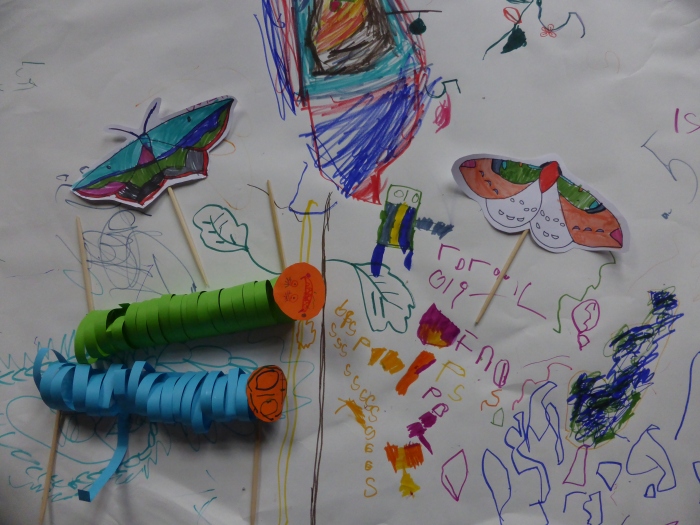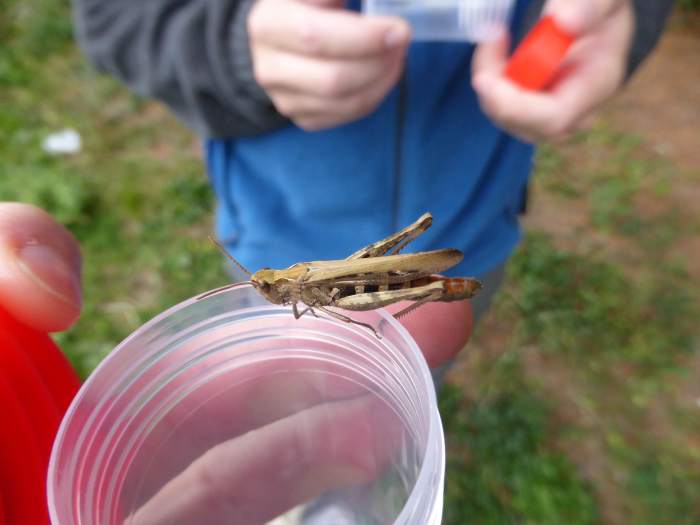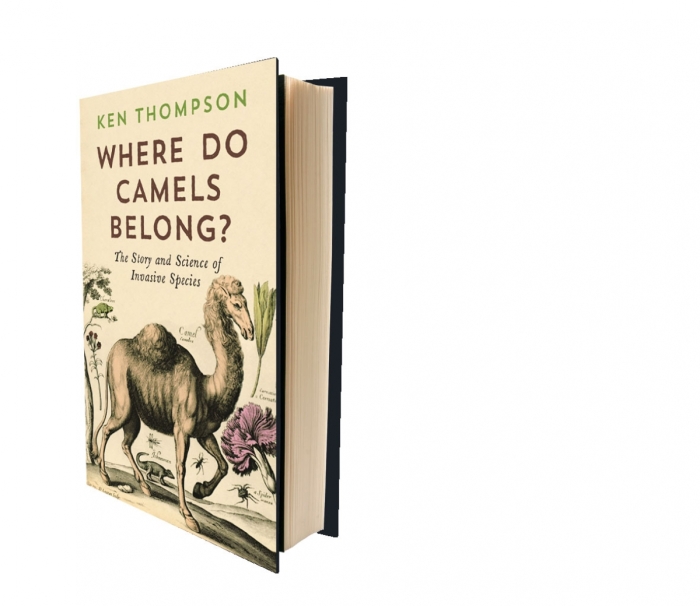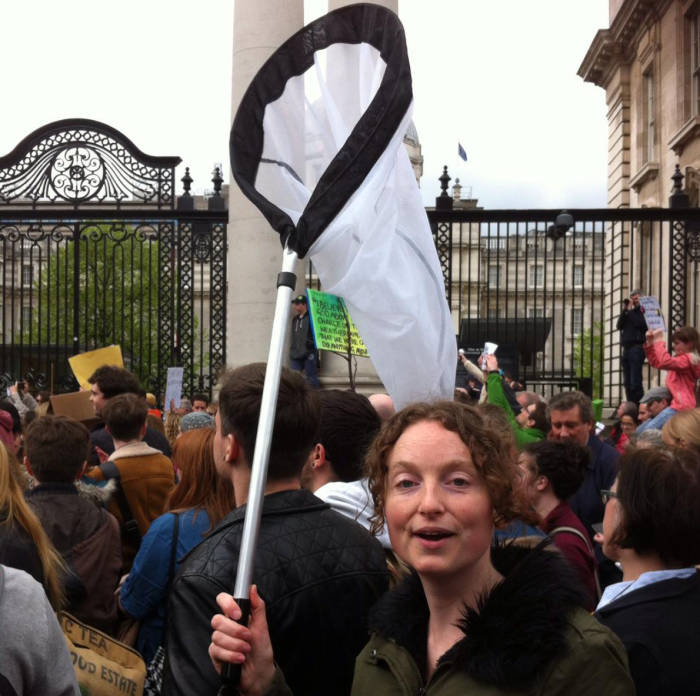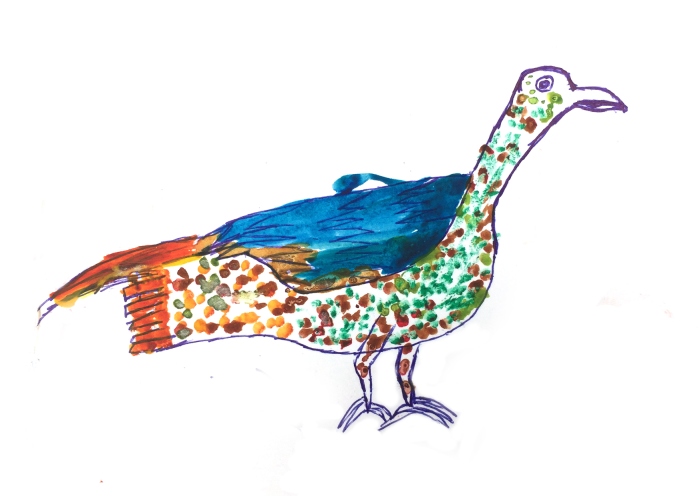
Who are those determined young artists going for gold in the Wild Postcard Project art competitions? Meet Solo*, a 13-year-old winner from Sainte Luce, Madagascar.
Solo is one of those children that stand out from the class because of the bright light of their potential and determination. Studious and artistic, he is also, secretly, the true ring leader of his friends, a veritable Malagasy Bash Street Kids. Once I saw them giddily clambering up and down a tree to pick flowers full of delicious nectar. A member of the gang snatched a flower from the hands of a child who was unable to climb the tree. Solo scolded the thief, and climbed the tree a second time to get his friend a new flower.
The group has a mischievous second-in-command who leads the group’s clamorous messing sessions, but when Solo decides that enough is enough and the SEED Madagascar conservation team are attempting to teach the hundred-plus members of Club Atsatsaky, he only has to say the word and they will settle down in their seats quietly. In 2011, I asked him when he would run for the position of Chef de Quartier (similar to a local TD or the village mayor), and he said, “Tomorrow!” In 2013, he replied, “In fifty years.” This time, he says, “I don’t know.”
Three years have passed since I worked as a conservation research assistant and environmental educator in Sainte Luce with SEED Madagascar. Last month I returned, with fellow SEED veterans Conor Friel and Daniel Wood, to run the Wild Postcard Project with Club Atsatsaky. This biodiversity themed art competition, created by fellow Biodiversity and Conservation MSc graduates Eileen Diskin and Angela Stevenson, has already been a huge success in Ireland and the Philippines. It is currently open for submissions in British Columbia and will run again in Ireland this spring. The winning entries are transformed into postcards which promote local biodiversity all around the world. The scaled down version we carried out in Sainte Luce aimed to encourage the children to celebrate their unique local wildlife (of which they are already very proud) and produce postcards for SEED to sell to volunteers and tourists in Fort Dauphin.

Since I left the region in 2014, Solo and his family have moved to another village. It is accessible only by foot from Mahatalaky, the nearest market town, a three-hour walk to Sainte Luce. But news of the Wild Postcard Project art competition travelled fast. The opportunity to use nice art materials and win a prize from andafy (abroad) was an exciting prospect, and Solo made the long journey from his new home to Sainte Luce just to take part!
Because of the scarcity of art materials in the three hamlets of Sainte Luce, we ran the competition a little differently from other Wild Postcard Project host locations. The conservation club meets twice a week – once in Ambandrika and once in Manafiafy. We took advantage of the reliability of turn out to these club meetings to run two drawing sessions, one in each location, providing pencils, oil pastels and watercolours for the children to use. Strategically placed posters boosted numbers to at least 150 children per session. Each child was allowed to submit two pieces, and in the end we received 573 entries!
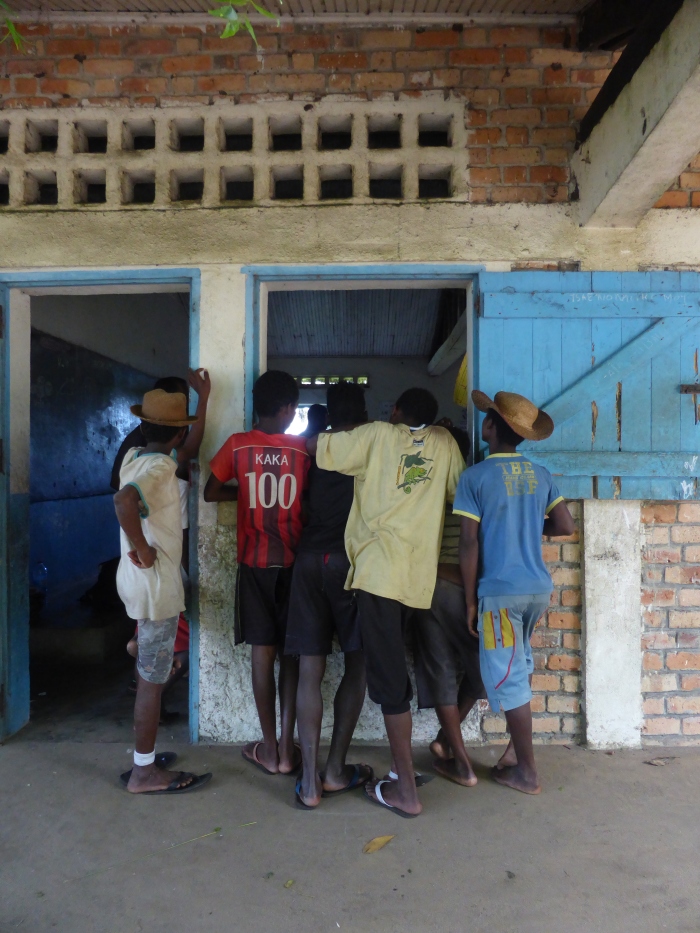
Solo’s approach was contemplative and methodical. He stayed in the classroom long after the others had left in order to perfect his masterpiece. His hard work paid off. His drawing was one of the ten artworks chosen to become postcard designs. Although I admit this kid is one of my heroes, I can’t be accused of favouritism, as I remained quiet while the other 6 members of the judging panel voted unanimously for his work! Not all choices were as easy to make, however. Trying to spread the winnings out across all three hamlets in Sainte Luce, get some semblance of gender and age balance, while ensuring that the winning drawings would look good on a postcard was tough, emotional work and sometimes ruthless out of necessity!
Each winner received a beautiful certificate, a set of Wild Postcards from the Irish competition, a bar of chocolate and a pencil or pen. The first winner to receive his prize couldn’t believe that all of these things were for him. He picked one item from the Conservation Programme coordinator’s hands, then a second, then the whole lot had to be forcibly piled into his little nine-year-old arms!
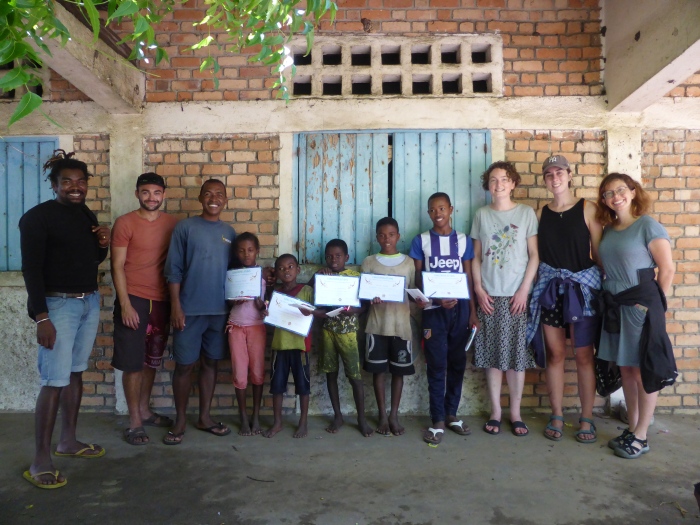
Because of my obsession with creepy crawlies, I insisted that we have a special invertebrates category. The winner drew an almost anatomically perfect spiny lobster, a species of major economical importance to Sainte Luce and the subject of one of SEED Madagascar’s sustainable livelihoods schemes, Project Oratsimba. He beamed with joy on receiving his award. We later learnt from his proud mother that he has been fantastic at art since he was tiny. Official recognition of his skills was a really big deal to him. Malagasy kids love a good certificate!
Solo accepted his prize with a serious, dignified air, bordering on aloofness. These days he has a look of someone who has spent more time loitering, bored and unchallenged, than usual. It turns out he has completed primary school but his parents can’t afford the 40,000 Ariary (10 euro) per year for his secondary school education and the substantial cost of food, clothes and school supplies that parents everywhere must be all too familiar with. He has been out of school for a year. My heart sank on hearing this, knowing that another of my bright, determined students recently failed his high school exams because of the challenges of returning to the education system after two years of absence.
The sometimes crushing sense of guilt and futility is one of the hardest things about working in a developing country, and also about not working there anymore. Why wasn’t I there? How did I let this happen?
It’s important to remember the bigger picture and not carry more than your fair share of the responsibility. Madagascar is vastly rich in mineral and natural wealth. The government could afford to pay its teachers properly, and could afford to provide free education to all of its children, if it felt like it (while larger than France, Madagascar’s former colonial power, the island is relatively sparsely populated – only 26 million compared to France’s 66.9 million). Instead, corrupt politicians pocket what mining companies pay them and allow them to plunder Madagascar’s irreplaceable wildlife – its most valuable and sustainable resource and its best chance at longterm prosperity.
On returning to Sainte Luce, I had begun to doubt that flying halfway across the world to run an art competition could benefit such a poor village in any way. How frivolous, how deluded I had been. But the look on the children’s faces as they drew and received their prizes diffused some of those feelings. Certainly, they need more nutritious food; protection against malaria and worms; better education, transport and healthcare; sustainable incomes for their parents. But, just like kids anywhere, they also need pride and confidence in their talents and knowledge. They need fun and play and outlets for creative expression. And in this current, unscientific climate, all generations need to be equipped with an understanding and appreciation of their environment.
In Sainte Luce, embroidery, weaving and ecotourism guiding are rapidly becoming significant sources of income. They enable fishermen to remain at home on dangerous stormy days, knowing that their children won’t go hungry as a result. In that context, drawing, colour theory and knowing the names of local wild animals become life-saving skills.
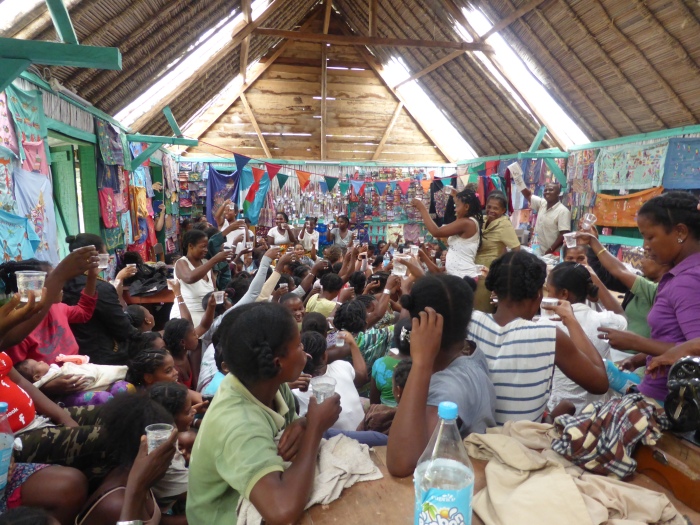
Before I left Sainte Luce again (heart torn out for a third time), I commissioned some of Solo’s drawings to send to a friend, another one of his fans. He presented them to me with his serious Chef de Quartier face on. Then I spotted a glimmer of his former glee and bashfulness, as he curled his chin into his chest, smiling, when I handed him my shabby old watercolours to keep. A good Malagasy friend, a dedicated teacher-and-guide-and-reptile-and-amphibian-expert-extraordinaire, has offered to find out about his family’s circumstances and work out how we can help with his education.
The Wild Postcards of Sainte Luce, Madagascar, will soon be available for purchase on my Etsy page, through the Wild Postcard Project website, and from SEED Madagascar in Fort Dauphin. All proceeds will go to SEED Madagascar’s environmental projects, including the conservation club itself. I’ll keep you posted.
*I have changed this name to protect this family’s privacy. Solo is a common name in Madagascar meaning “replacement”, as in “we have lost one child but have been blessed with another”.
